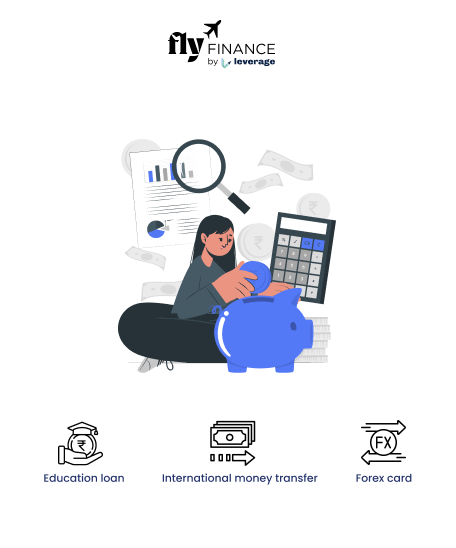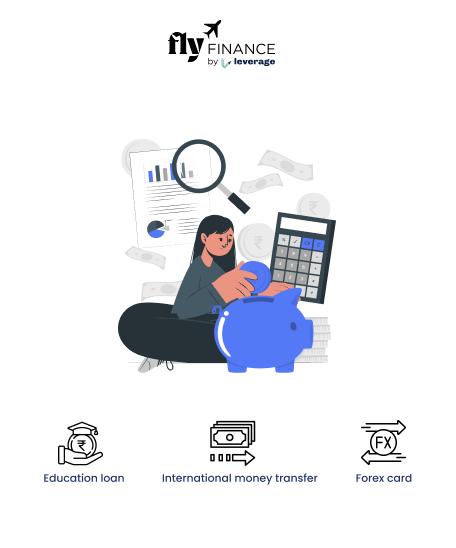The foreign exchange market plays a vital role in global trade and finance, allowing individuals and businesses to exchange currencies for international transactions. Within this market, the concept of the forward rate in foreign exchange is essential for managing financial risks and planning future transactions.
But what is the forward rate in foreign exchange? In this blog we will explore all about a forward rate in foreign exchange, how it works, and its significance in financial planning.
This Blog Includes:
- What are the Basics of the Forward Rate in Foreign Exchange?
- How is the Forward Rate Calculated?
- Why is the Forward Rate Important?
- Forward Rate vs. Spot Rate: Key Differences
- Practical Applications of Forward Rates
- Risks and Limitations of Forward Rates
- How to Access Forward Rate Contracts
- FAQs on Forward Rate in Foreign Exchange
What are the Basics of the Forward Rate in Foreign Exchange?
The forward rate in foreign exchange refers to the agreed-upon exchange rate for a currency pair to be exchanged at a specific future date. Unlike the spot rate, which applies to immediate transactions, the forward rate is used in contracts that lock in the rate for a future exchange, helping parties hedge against currency fluctuations.
- Definition: A forward rate in foreign exchange is the rate at which two parties agree to exchange currencies on a predetermined future date.
- Purpose: It helps mitigate the risk of adverse currency movements.
- Contract-Based: Forward rates are part of forward contracts, typically arranged through banks or financial institutions.
- Time Frame: These contracts can range from a few days to several years, depending on the agreement.
Also Read: Top 10 Foreign Exchange Companies in the World 2025
How is the Forward Rate Calculated?
Calculating the forward rate in foreign exchange involves considering the current spot rate and the interest rate differential between the two currencies involved. This ensures the rate reflects the cost of holding one currency over another until the contract’s maturity.
Key Factors in Forward Rate Calculation
The forward rate in foreign exchange is not a random estimate but a precise calculation based on market conditions and economic principles. Below are the primary factors that influence its determination:
- Spot Rate: The current exchange rate for immediate currency exchange.
- Interest Rates: The difference in interest rates between the two currencies affects the forward rate.
- Time to Maturity: The duration of the forward contract impacts the calculation.
- Formula: The forward rate is calculated using the formula:
Forward Rate = Spot Rate × (1 + Interest Rate of Quote Currency × Time) / (1 + Interest Rate of Base Currency × Time).
Why is the Forward Rate Important?
The forward rate in foreign exchange is an important Forex glossary term. It is a critical tool for businesses, investors, and individuals engaged in international transactions. It provides certainty and protection against unpredictable currency movements, enabling better financial planning.
Benefits of Using Forward Rates
Forward rates offer several advantages for those dealing with foreign currencies. These benefits make them a popular choice for managing financial risks.
- Risk Management: Locks in exchange rates to avoid losses from currency fluctuations.
- Cost Predictability: Helps businesses forecast expenses for international payments.
- Planning Tool: Enables accurate budgeting for future transactions.
- Customizable: Forward contracts can be tailored to specific amounts and dates.
Forward Rate vs. Spot Rate: Key Differences
While both forward and spot rates are exchange rates, they serve different purposes and operate under distinct conditions. Understanding their differences is crucial for making informed financial decisions. Below is a comparison of the forward rate in foreign exchange and the spot rate to clarify their roles:
| Aspect | Forward Rate | Spot Rate |
| Timing | Applies to future transactions. | Applies to immediate transactions. |
| Risk | Reduces currency fluctuation risk. | Exposed to market volatility. |
| Contract | Requires a forward contract. | No contract needed. |
| Flexibility | Less flexible due to fixed terms. | Highly flexible for instant trades. |
Practical Applications of Forward Rates
Forward in foreign exchange is widely used in various scenarios, from corporate finance to personal remittances. Their ability to provide stability in an unpredictable market makes them invaluable for cross-border financial activities.
Real-World Examples
Forward rates in foreign exchange are applied in several practical situations to ensure financial stability. Here are some common use cases:
- Import/Export Businesses: A company importing goods can lock in a forward rate to pay a supplier in a foreign currency at a future date, avoiding unexpected cost increases.
- Investment Planning: Investors holding foreign assets use forward contracts to secure exchange rates for future repatriation of funds.
- Education Abroad: Individuals planning to pay overseas tuition fees can use forward rates to fix the cost in their home currency.
- Loan Repayments: Borrowers with foreign currency loans can opt for currency hedging against rate changes for future repayments.
Risks and Limitations of Forward Rates
While forward rates in foreign exchange offer significant benefits, they are not without risks. Understanding these limitations is essential for making informed decisions when entering forward contracts.
Below are some risks and limitations of the forward rate in foreign exchange:
- Lack of Flexibility: Once agreed, forward contracts cannot be easily modified or cancelled without penalties.
- Opportunity Cost: If the market moves favorably, the locked-in rate may be less advantageous than the spot rate at the time of exchange.
- Counterparty Risk: There is a risk that the other party in the contract may default.
- Cost: Some forward contracts may involve fees or premiums, depending on the provider.
Also Read: List of Top Foreign Exchange Companies in India 2025
How to Access Forward Rate Contracts
Forward rates in foreign exchange contracts are typically offered by banks, financial institutions, and specialised forex brokers. Accessing these contracts requires understanding the process and requirements.
Here’s how to get started:
- Choose a Provider: Select a reputable bank or forex broker offering forward contracts.
- Specify Details: Define the currency pair, amount, and maturity date for the contract.
- Agree on Rate: The provider will quote a forward rate based on current market conditions.
- Sign the Contract: Formalise the agreement, ensuring all terms are clear.
The forward rate in foreign exchange is a powerful tool for managing currency risk and ensuring financial stability in international transactions. By locking in an exchange rate for a future date, businesses and individuals can plan with confidence, knowing their costs are predictable. While forward contracts offer significant benefits, they also come with limitations that require careful consideration.
FAQs on Forward Rate in Foreign Exchange
The forward rate in foreign exchange refers to the agreed-upon exchange rate at which two parties will exchange currencies on a specific future date. It is used in forward contracts to lock in the rate, helping to manage the risk of currency fluctuations.
A forward exchange rate is the rate set for exchanging two currencies at a future date, as agreed in a forward contract. For example, if a business agrees to pay a supplier USD 10,000 in three months and locks in a forward rate of INR 83 per USD, the business will pay INR 830,000 regardless of market fluctuations at that time.
The forward rate of currency is the exchange rate fixed today for a currency pair to be exchanged at a specified future date. It is calculated based on the current spot rate and the interest rate differential between the two currencies, ensuring protection against future currency volatility.
The key differences between spot and forward rates are:
Timing: Spot rates apply to immediate currency exchanges, while forward rate in foreign exchange are for future transactions.
Risk: Spot rates are exposed to market volatility, whereas forward rates reduce risk by locking in the rate.
Contract: Spot transactions require no contract, but forward rates are part of a forward contract.
Flexibility: Spot rates offer flexibility for instant trades, while forward rates are fixed and less flexible.
A forward rate in foreign exchange is the rate agreed upon for a future currency exchange. For instance, an individual planning to pay overseas tuition fees in six months might lock in a forward rate of GBP 1 = INR 105. If the tuition is GBP 5,000, they will pay INR 525,000, regardless of whether the market rate changes by the payment date.
A forward exchange contract is a binding agreement between two parties to exchange a specific amount of one currency for another at a predetermined forward rate on a future date. It is commonly used to hedge against currency fluctuation risks and is typically arranged through banks or financial institutions.
A forward rate agreement (FRA) is a financial contract that locks in an interest rate for a future period, often related to currency exchange. While the blog does not explicitly define FRAs, they are closely related to forward rates in foreign exchange as they involve setting a rate for a future financial transaction. In the context of forex, an FRA could be used to manage interest rate risks tied to currency forward contracts.
To learn more about bank accounts for students, the best education loans, forex, banking experience for global students, or international money transfers, reach out to our experts at 1800572126 to help ease your experience with studying abroad.
Follow Us on Social Media





























